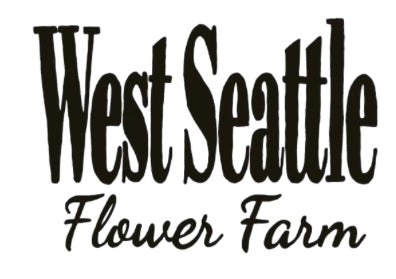“Wait, you’re planting those NOW?”
I get that question a lot when people on the ‘gram see me planting sweet little seedlings in December.
By mid-December this year, I will have planted hundreds of seedlings, corms and bulbs.

In Seattle, we only dip below freezing a few times a year and our ground almost never freezes. (Except for last year, when we had like a week of temperatures in the teens and I lost A LOT of plants due to ill preparedness.)
This means we have a pretty flexible climate for planting cool hardy plants — both from seed and corms. (Cool hardy annuals are plants like snapdragons and poppies — along with a whole laundry list of other plants — that benefit from a prolonged cold period before they bloom. Annual plants are plants grown from seed that bloom for one season then their life cycle is over.)

A good example is snapdragons: If you plant them in a time when it’s cool and they get several weeks (or months) of a prolonged cold period before they bloom, the plants tend to have longer stems and are healthier (and more disease resistant!) than if you were to plant them in March. Anemones and ranunculus also benefit from a cool period.
The cold period allows the plants to focus on root development, then explode with growth as the days get longer and the weather gets warmer. Depending on the flower, it might bloom earlier in the season if planted earlier in the winter.
While a lot of other growers in other parts of the country need to get cool hardy annuals in the ground in September and October, we Pacific Northwesters can procrastinate (like me) and plant them when we finally get around to it.

(Me, finally getting around to planting)
Because seedlings, and other plants like anemones and ranunculus, can tolerate cold weather to a point, I utilize two things as insurance policies: Leaves and low row cover. (I’m not saying both of these things are required, they’re just what I use.)
The magic of leaves
In order to keep the soil ready for planting, I mulch with A LOT of leaves. If I have an area that I intend to plant into, but might not get to it for a week or two, I’ll cover it in leaves.
I use leaves because they’re a free kind of mulch and they’re everywhere. Plus they insulate the soil, so when we have a frost, the leaves freeze but the soil underneath stays soft.
Once I plant seedlings, I tuck leaves around them to help keep the soil a bit warmer.

Also, leaves are basically a Golden Corral buffet for worms. Worm poop improves soil health. So more leaves = more worms = more worm poop and more worm poop = better soil.
Here’s the one big downfall with leaves: Slugs. They can stowaway in the leaves and be a pain in your baby plant’s butts. So be on the lookout for those assholes.
Low row cover
This is basically frost cloth tightened over hoops that help keep the soil and plants a few degrees warmer. It’s not crucial, but nice to have around in case Seattle dips into the 20s.
I buy my row cover from Gardener’s Workshop, and I buy low hoops from Amazon. (Warning: these hoops are a bit flimsy, so I don’t exactly give them a glowing recommendation. I use them because they were easy to order and (mostly) got the job done.)

Some other things to keep in mind:
- I always check the forecast before planting. If we have snow or below freezing weather coming up, I wait until the cold spell is over before I plant.
- You can plant cool hardy plants later in winter, like late January and early February. You will get a shorter cool period, but have less random cold spells to worry about with freezing your plant babies.
This year, I am keeping it simple with what cold-tolerant plants I am growing. For seedlings, I am only growing two varieties of poppies and one variety (and three colors) of snapdragons.
I’ve planted most of them already (just before Thanksgiving) and tucked them in with some leaves. I have also put the hoops up, so I am ready to put up frost cloth when we get a cold spell.

